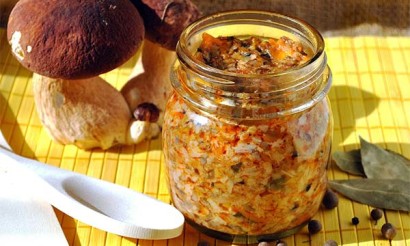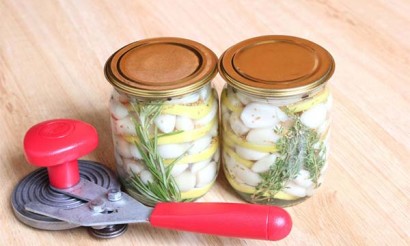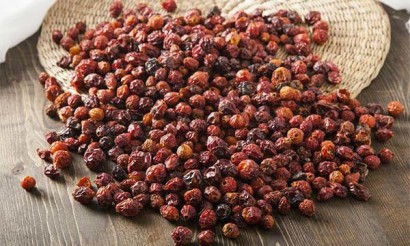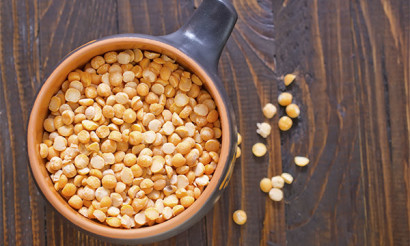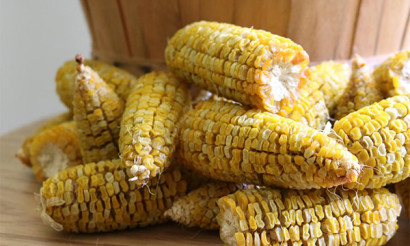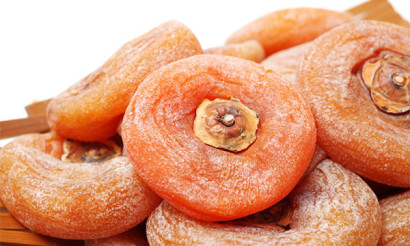How to Dry a Bay Leaf Properly
The bay leaf can be called one of the most popular spices, which is added to almost any dish. It gives food a pleasant aroma and flavor. It is also often used in the preparation of a variety of marinades and canning. There are recipes that cannot be imagined without the addition of bay leaf.
This spice can be freely purchased at any grocery store or pavilion. But the bay leaf, dried on its own, is much more fragrant. Moreover, in this case you can be sure of the quality of the initial raw material.
However, it is not easy to get the leaves of this evergreen tree everywhere. It grows only in the southern regions, on the coast. It has been known to mankind since ancient times, and those who spread laurel trees outside their state were the ancient Greeks. To dry the leaves yourself, you will have to find a place that sells them or buy them in one of the regions in the south from local farmers. But you can grow your own laurel tree in a greenhouse or in an apartment on a windowsill. It will not, of course, grow to the size of a real tree, but it will give enough greenery to make it for storage.
The use of dried laurel leaves is preferable to fresh ones. First of all, the dried spice is more aromatic. In addition, there are certain periods in the collection of leaves, when they concentrate the greatest amount of essential oils, useful substances. Therefore, there is a need to store them.
How to choose a bay leaf for drying
For harvesting, the leaves are collected from the laurel noble. This is a wild plant, the halo of its habitat - the subtropics. Today there are many other varieties, but this particular tree is still the main source of this fragrant spice.
It is harvested at a certain time, when the plant's growing season ends. Under natural conditions it is between November and February. This is when the leaves contain the most vitamins, beneficial substances, and essential oils. If the laurel tree is grown in a greenhouse or at home, the leaves are harvested in August, early September.
Leaves are removed only from trees that are over 2 years old. When harvesting, special attention is paid to the appearance of the leaves. It should not be damaged, darkened, stained. The leaf is a bright emerald color, stiff, elastic, smooth to the touch. The work is carried out only in warm and dry weather. It is desirable to pluck leaves in the first half of the day, as soon as the dew dries out. It is usually recommended to cut off sprigs with 5-12 leaves each, and send them in this form for drying. If the natural method is used, so they can be stored later. But not with all methods of drying and storage this option is convenient. It is possible to cut individual leaves, but this will take more time. It is necessary to leave a small twig at each leaf, so will save more useful substances during drying. It is recommended to take for drying large leaves, as they accumulate more useful and fragrant substances.
If the raw material is purchased from manufacturers, it is worth carefully inspecting each twig and leaf to prevent the batch from being contaminated, damaged by insects or during harvesting. Such leaves will still have to be thrown away, they are not suitable for drying, storing and eating.
How to prepare the product for drying
Preparation begins with sorting. No matter how carefully the leaves are inspected when picking and buying, there may be spoiled specimens, you must get rid of them, otherwise they will spoil the whole batch.
It is not recommended to wash leaves that are going to be dried, so that they do not lose flavor or gain excess moisture. But it is not always possible to fulfill this condition. Leaves can be covered with dust. In this case, it is better to rinse them carefully under a thin stream of cold running water. Each leaf should be cleaned of dirt and dust. If they are twigs, after washing they should be easily shaken to remove excess moisture.
It is necessary to spread out on a table paper towel or cotton cloth, lay the raw material on the absorbent material. Single leaves spread in a single layer at a small distance, leaving a space of 1-2 mm. The twigs can first be carefully blotted with a towel so as not to damage them. Leave until the moisture is completely dry. It is better to place the leaves in the shade, where there is good air circulation. Direct sunlight has a negative effect on the coloring, the product may later darken. Also, exposure to the sun causes the leaves to exude flavor, losing some of their essential oils. After drying the product will be less fragrant.
Do not shred the raw material to dry. Shredded leaves will dry faster, but will lose some of their valuable substances and flavor. Their flavor will become less intense, also their beneficial effects on the body will decrease. Therefore, the raw material is dried as a whole.
How to dry a bay leaf at home
There are several ways how you can dry the leaves of the laurel tree. The most ancient and not requiring the use of special devices is natural drying in the fresh air. But not everywhere has the conditions that will allow you to dry the leaves for two weeks without worrying that sudden rains or cold weather could ruin the whole batch.
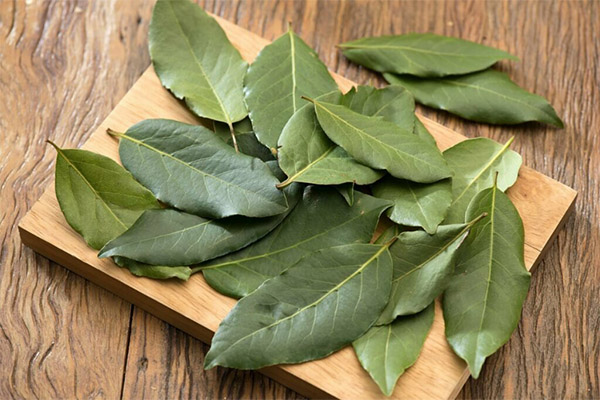
Other modern methods of drying allow you to not depend on the weather and dry the harvested crops much faster. They have their own disadvantages. In intensive drying with hot air, some of the useful substances escape, the product becomes less flavorful. There is also a high probability of burning rather than drying the leaves. Then you will have to start over. Over-dried leaves give bitterness, they can not be used in cooking. The use of devices implies the cost of electricity, a significant reduction in the volume of blanks.
The variety in the choice of means allows you to use the method that suits the particular hostess, taking into account the conditions, the amount of raw materials and the goals.
In the oven
Drying in the oven will take about 4-6 hours. The duration depends on many factors. Here play a role and the power of the oven, and the presence of additional functions that improve air circulation, and the volume and humidity of raw materials. Therefore, it is necessary to be near at all times and monitor the process. If the leaves dry out or start to burn, all the effort will be wasted. You will have to throw everything away and start all over again.
Before drying, the laurel must be prepared, rinsed, and dried of water. For this method, the leaves must necessarily be cut from the branch, but leave a small portion near the leaf. It is better to remove the sticks already after drying, when the product is sent to storage.
Set the temperature to 45-50 degrees. It is better if it is possible to set 40-45, then the probability of burning the leaves will be much lower. If there is no possibility to set such a low temperature, you need to dry the product with the oven door ajar. For electric appliances, the gap should be 5-7 cm, for gas appliances - 15. This will help to lower the temperature a little and allow the evaporated moisture to escape.
The tray should be lined with baking paper or foil. On the bottom lay the leaves in a single layer at a small distance, making sure that they do not lie on top of each other. This way the drying process will go unevenly. We recommend placing the tray on the bottom tier of the oven, so that there is a little more heat at the bottom and there is room for air circulation at the top.
Leave the tray with the leaves in the oven for 2 hours. When the time has passed, take it out, let it cool down, turn it over to the other side and put it back in the oven for another 2 hours.
After 2 hours, remove the baking sheets and leave to cool on the table at room temperature. Check if they are ready. If the leaves are still firm, continue the drying process, reducing the time in the oven to 1 hour.
Check the product for readiness only after it has cooled completely. You can be guided by the appearance. Finished leaves remain green, but a little dull, acquiring a shade of khaki. Too much darkening or browning indicates that the product has begun to burn.
It is important to constantly monitor the process so that the leaves do not burn. You can let them dry for 2 hours and then leave them to dry naturally. But then the process will take longer and there is a chance that the product will not dry to the end.
In an electric dryer
An electric dryer makes the process of getting the product dry much easier. It takes longer than in an oven, but it doesn't require control over what happens. Occasionally, if the leaves take up more than one tier, you'll need to swap trays. Dryers are arranged so that the product does not burn in the process, but is blown evenly by hot air. The duration of drying will be about 6-8 hours. This depends on the capacity of the device, the amount of raw materials, the humidity in the room. If using an electric dryer, it is also recommended to remove the leaves from the branch and dry separately.
Prepared leaves spread out on a grid at a distance of 1-2 mm in a single layer. If the grid is too large cells, it is worth to cover the bottom with gauze, so that the leaves do not fall on the lower tiers and the fan.
It is recommended to dry at 35-40 degrees or follow the instructions of the device, if there is a point about drying the laurel leaf. If there are more than one tier, it is worth changing the grids once an hour - lifting the lower ones up and lowering the upper ones down. In this way the process will proceed evenly.
If the humidity in the room is high, then it is recommended to raise the temperature to 50 degrees. When the dryer is running, the humidity in the room can increase significantly, which affects the duration of the drying process, so you should install the device in a room where you can open windows or doors to air out. It is better if the electric dryer stands outdoors under a canopy, where the air circulation is natural.
Periodically check that the product is ready. If the color has changed, the leaves have lost their glossy sheen, you should stop the process and let the raw material cool down directly in the dryer. Then once again check readiness. Stack the dried leaves for storage, the ones that are not ready, finish drying. This can be done using an electric dryer or left in a room to dry naturally.
In the microwave.
Using a microwave oven is the most unfortunate way to dry bay leaves. First, the microwave allows you to dry too small a volume of product. Secondly, there is a high probability of over-drying or burning the leaves. If you need a small amount of dried bay leaf in a hurry, you should consider this method. In terms of duration, the process will take about 10-15 minutes. All this time you will have to be around and closely monitor what is happening, at the right time to turn off the oven, check and bring it to readiness.
The duration depends on the power, for which the device is designed, the volume of leaves and the option of drying the product. Usually it is recommended to use the minimum power, turn on the program for 2-3 minutes, and then check the result. If the leaves are completely dry, you can stop the process. In the case where they have retained moisture, you must continue until the raw material is completely dry. The minimum power in microwave ovens can range from 80 to 200 watts. Therefore, cooking times will vary. Also, some recommend using a defrost mode.
Prepare the raw material in the same way as for other drying methods. The leaves should be placed on a microwave plate with a paper towel or cotton cloth. If you use a paper towel, make sure that it is not made from recycled paper. Such a product may contain metals that should not be placed in a microwave oven. Cover the leaves on top again with a layer of paper or cloth.
Place the plate in the oven. Set the minimum power setting, time 2-3 minutes. When the program is finished, open the oven, let the steam out, take out the plate, cool the leaves, check the readiness. If necessary, repeat the process several times.
Afterwards, leave the leaves on the table for a few more hours so that they can finally dry out and cool down. Only then can they be put into storage containers.
In the sun
This method is the most natural and useful. Only it allows you to save most of the useful substances, vitamins, essential oils. But it is not recommended to dry directly under the sunlight. Ultraviolet light destroys the chlorophyll in the leaves, which gives them a rich emerald color. If you dry them in the sun, they take on a grayish hue and become dull. Moreover, under the influence of sunlight the leaves actively evaporate essential oils and their content is sharply reduced in the product itself. Therefore, it is recommended to dry the laurel outside, but sheltering them in the shade and ensuring good air circulation.
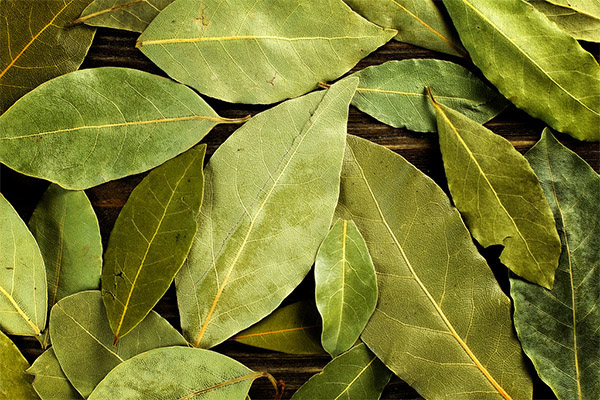
Some experts advise using attics for this purpose. It is usually very hot and dry there. Only beforehand you need to open all the available windows, doors, skylights. You can also dry in a barn or under a shed. In addition, this method insures the product in case of sudden rain. There will be no urgent need to hide or move pallets into shelter.
If dew is falling at night and there is a significant drop in temperature, you should consider moving the billets into a warm room overnight. In the morning, once the moisture has dried, you will have to take the pallets back out.
At first glance, the method of natural drying does not require much skill or effort. But it is not quite so. Twice a day you need to come up and turn the leaves so that they dry evenly. Also, stir them once a day. In addition, you will need to take the blanks home at night, the drying time will take 10-14 days. Yes, and to achieve results, you need to have hot, dry weather all this time.
There are two options for drying bay leaves naturally.
The first involves drying the twigs with the leaves. There should be 5 to 10 pieces on each one. Then you can store them on the branch, cutting them off as needed.
If air-drying, it is not recommended to pre-wash the product, as the moisture may not evaporate completely and cause the beginning of rotting. If the leaves are too dusty or dirty, then you will have to wash them with running water, but before drying try to get rid of excess moisture.
The prepared twigs are tied together in a bundle of 3-5 pieces. Then under a canopy or in a well-ventilated room pull a thread, cord, rope, on which to hang the bundles. It is worth leaving a distance for air circulation.
There is no point in stringing each leaf, as you do when drying mushrooms or eggplants. This will take a long time, and damaged leaves will start to lose juice with valuable substances.
When the leaves on the twigs are finally dry, they can be stored like this by placing the string in a cool, dry room. To protect them from insects, you should cover them with gauze. This can also be done during the drying process.
In the second method, the leaves are dried on trays or grids. Of course, a lattice bottom is better. The air will blow evenly over each leaf. But trays made of wood, plywood or trays will also do the job. In this case, the bottom should be covered with thick paper or cloth. Twice a day the leaves will need to be turned and once a day change the substrate for a fresh one. Lay the raw material in a single layer, cover the top with gauze to protect it from insects, dust and wind. This method requires more participation in the process than the first. But then the finished product can simply be stored in a jar or a bag on a shelf.
Either method has its advantages and disadvantages. When choosing, it is worth considering your preferences, conditions and requests.
How to determine if the product is ready
A properly dried bay leaf should break well, but not crumble to dust. If it bends and does not break, the product should be dried. After drying, the leaves change a little shade of green, but do not lose color altogether. Instead of an emerald green color, the raw material acquires a khaki tint. A gray patina or brown color indicates that mistakes have been made in the drying technique. The leaves are likely to be severely overdried or even burnt. Such a product can be bitter and spoil the taste of the product.
If the leaves were too severely dried and have become brittle, but they still have their flavor and are not bitter, they too can be stored and used. Whole they cannot be stored, so they should be ground into a powder, which should be added to other spices, such as peppers. Ground bay leaf can also be mixed with salt.
If the moisture has not been completely removed, the bay leaf will not be stored for a long time, will begin to dry out and become covered with mold.
How to properly store dried bay leaf
It is important to store the product properly. Conditions should not only prevent an increase in humidity, mold development, but also loss of flavor and aroma. Optimal conditions for storage are low temperature up to +24 degrees, low humidity, no direct sunlight. Better if the storage place is dark, cool and dry. Temperature and humidity readings should not be allowed to change. Otherwise, condensation will form, which creates a favorable environment for the development of mold and fungi.
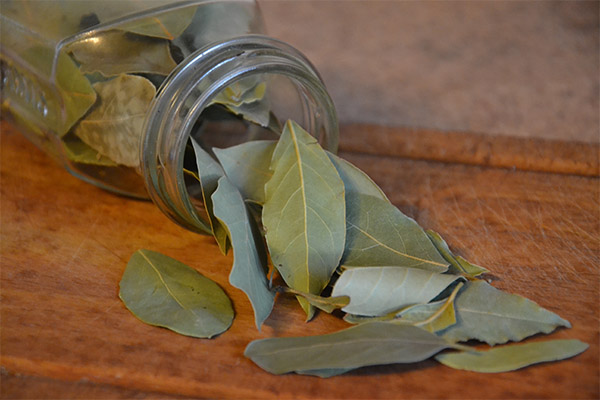
You should also avoid storing bay leaf where it is too dry and hot. Over drying also leads to deterioration of the product, it becomes crumbly, loses flavor and becomes tasteless.
Leaves dried in bundles on twigs can be stored directly in them by hanging them upside down in a dark pantry or closet. Those leaves that have been dried individually can be placed in airtight containers with tightly sealed lids. Sometimes it is advised to store in tin cans, but this method has a drawback. The metal oxidizes and there is a rusty smell inside, which is well absorbed by the dry leaf. This metallic flavor can then be felt in the cooked dish as well.
It is better to use glass or plastic containers designed for storage. You can also use plastic bags with clasps. The more airtight the packaging, the better the flavor is preserved.
Storage in paper or canvas bags is allowed, if it is possible to maintain a constant humidity and temperature in the room.
The shelf life of the product is affected by temperature. A cool room allows the bay leaf to be preserved for a year or more. If the room is hot and the sun shines brightly, the leaves will burn out quickly and in a few months become unfit for consumption.
What are the benefits of dried bay leaves
The beneficial properties of the laurel have been known since antiquity. Even Greek doctors used infusions and oil to treat many diseases. It contains a lot of essential oils, phytoncides, which help the body to fight viruses, bacteria, inflammatory processes. Trace elements such as calcium, magnesium, iron, potassium, sodium are involved in metabolic processes, have a beneficial effect on the cardiovascular, digestive and excretory systems. Fatty and organic acids, vitamins A, C, B6 help soothe the nervous system, enhance immunity.
Adding bay leaf to food or using it in the form of infusions improves appetite, normalizes blood pressure. Its use helps to fight colds and sore throats. The bay leaf is also used for some inflammation of the mouth. It is recommended to chew a leaf 2-3 times a day, after a few days the lesions will quickly heal.
But there are also contraindications to the laurel, especially when using infusions and oils. For example, during pregnancy, you should not drink bay leaf infusion, it can provoke a miscarriage. It is also not recommended to use it during lactation. In some people, the presence of a small amount of dried leaf in a dish can cause a strong allergic reaction.
It should be noted that the use of bay leaves in cooking usually does not bring harm to the body, but only significantly improves the taste and aroma of dishes, contributes to the appetite.
Where to use dried bay leaf
Dried product is actively used in cooking, folk medicine, home cosmetology. The bay leaf oil eliminates problems of oily skin and is used in the treatment of psoriasis. Also the infusion helps to normalize digestion, effectively fight colds.
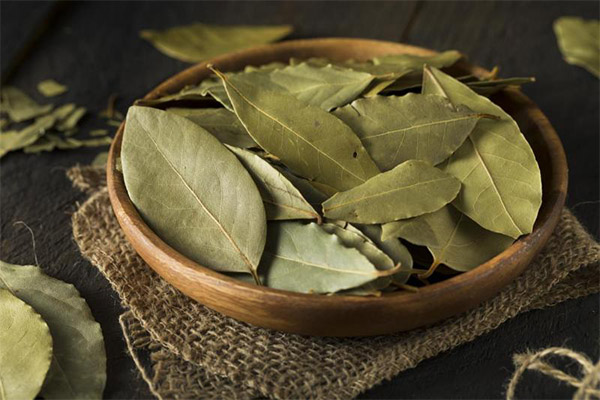
But the most widespread is the bay leaf in cooking. It is used as a flavorful spice in cooking meat, fish, a variety of soups and broths, spicy sauces and gravy. It is indispensable in canning and marinating. Sometimes the bay leaf is even used in sweet compotes to give them a spicy note.
But it is worth remembering that this spice has a strong aroma and taste. Excessive addition can spoil the dish. It is also recommended to add it when the food is almost ready. Prolonged cooking with the bay leaf can lead to bitterness. It needs to be handled skillfully.
«Important: All information on this site is provided for informational purposes only for information purposes only. Consult a health care professional before using any of the recommendations. specialist. Neither the editors nor the authors shall be liable for any possible harm caused by materials."


